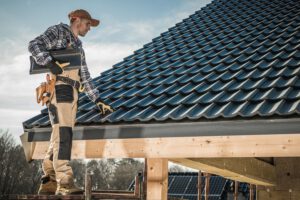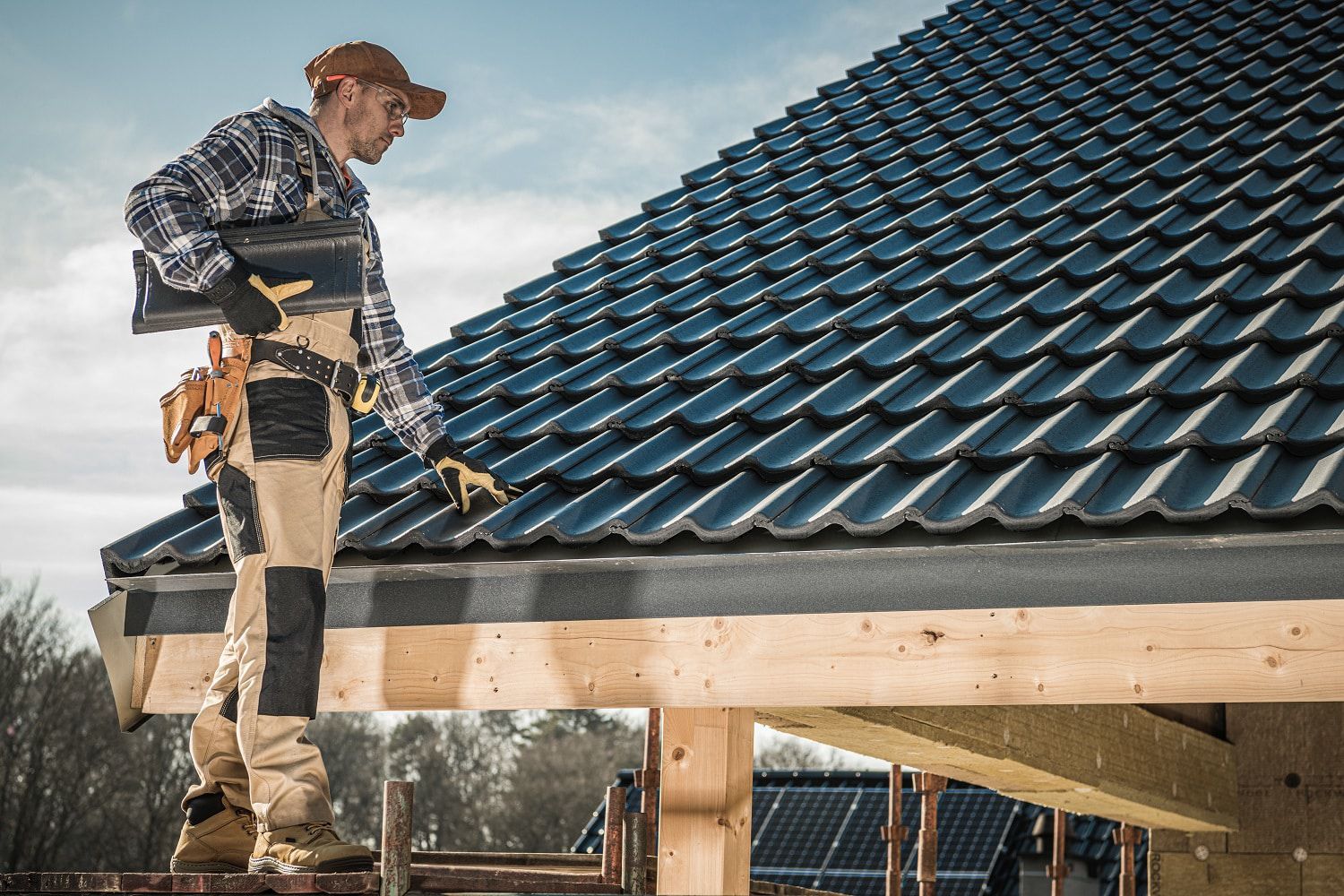Roofing Company has years of experience and expert knowledge when it comes to roofs. They can help homeowners with a variety of issues, including repairs and replacements.
A typical roofing contractor is licensed and insured. They can also assist with obtaining the required permits and inspections. They can also provide a detailed contract that lists all services and materials included in the job.
As the name implies, roofing contractors specialize in roofs. Their work encompasses the design of different roof arrangements, and they may also provide solutions for fixing leaky roofs and repairing damaged shingles. They may also offer other services, such as gutter systems and chimneys, and some may even have a division that specializes in asbestos abatement. They are skilled at working with a variety of materials and can handle the most difficult of roofs.
Before you hire a contractor, be sure to ask for written estimates and verify that the company has valid insurance and workers’ compensation coverage. It is also important to make sure the company will obtain a permit for the job and meet local code requirements. This will prevent homeowners from getting ripped off by contractors who fail to follow the law and may not get paid for their work.
If you are looking for a roofer, make sure to check whether they have a good reputation and are licensed in your area. A quick Google search can tell you if they are legit. Look for a business that has multiple online sources that Google recognizes, and avoid those that don’t.
Many roofing businesses are small and locally owned. This makes it easier to build rapport with customers. Choosing the right marketing strategies can help you attract more customers and build your reputation. One way to do this is by sending direct mail to homes in your area. This can include postcards and flyers, but be careful not to break any local rules about junk mail and soliciting. Another option is to advertise online through digital marketing platforms such as Google Search and Local Services Ads.
If you are interested in becoming a roofer, you should know that the job requires extensive physical labor and is very repetitive. It is not uncommon for roofers to experience back pain and neck strain from repetitive movements. Additionally, they may be required to work on call during extreme weather conditions. This can take away from family time and other personal activities.
Warranties
Many property owners are tempted by the false assurances offered by roofing manufacturers’ long-term system warranties. However, the truth is that most warranties have many limitations and exclusions. Some of these include time limits, monetary restrictions, and determinations of applicability. Others also exclude expenses such as labor or certain parts of the roof. This is why it’s important to understand how these warranties work and what they do (or don’t) cover.
There are three types of roof warranties available: a contractor warranty, a manufacturer’s product warranty, and a workmanship warranty. While most of these will have some overlap, it’s important to understand the differences between them. A product warranty is a promise by the manufacturer to fix or replace products that are defective. This is separate from a workmanship warranty, which is a promise by the contractor to repair or replace the roof installation itself.
The vast majority of roof leaks are caused by problems with the installation. It’s important to find a contractor that offers both a manufacturer’s warranty anda workmanship warranty for their services. The best way to ensure this is to ask the contractor for a copy of their warranty before hiring them. A quality roofing contractor will be willing to provide a copy of their workmanship warranty for free.
Unlike product warranties, workmanship warranties do not typically cover materials. Instead, they cover the labor costs associated with repairing or replacing the roofing material. They may also offer coverage for other components that are installed on a roof, such as underlayment and ventilation products. Most manufacturers’ product warranties exclude coverage for leaks caused by non-manufacturer-produced elements like flashings, pitch pans, coping metal, and edge metal.
Another thing to consider is whether or not a warranty will be transferable. This can be a big factor for those who plan to sell their home in the future. It’s important to know if the warranty will be valid for the new owner of the house, as well as any procedures that need to be followed to transfer the warranty. These details can vary widely between manufacturers, and some will not allow the transfer of a warranty at all.
Pricing
When it comes to reroofing, price is the biggest factor for many homeowners. On average, homeowners spend $9,117 for roof replacement on single-family homes up to two stories tall. This includes removing the old shingles, making spot repairs to the underlying deck or structure (if needed), and installing new shingles.
Some contractors charge a flat fee for their services, while others offer an estimate broken down into material costs and labor costs. This can help you budget for your project and determine whether the contractor is within your price range. Most reputable contractors will also be willing to provide references from past customers and a portfolio of previous work.
Roofing contractors are able to use their extensive experience with the re-roofing process to accurately estimate the amount of material and labor needed for the job. They are also able to help with permitting and inspections required by local authorities. They often perform a variety of other home improvement projects, such as window and siding installations, which can be helpful to homeowners seeking a one-stop shop for all their home improvement needs.
When comparing pricing, beware of contractors who charge unusually low prices. This may indicate that they are cutting corners or using subpar materials, which can lead to poor results. It is also important to choose a contractor that provides a written contract that outlines the work to be done, timelines, and costs involved. Finally, choose a contractor who is professional in their behavior and responsive to questions and concerns throughout the project.
